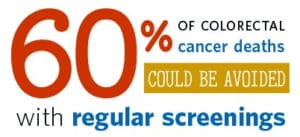 Virtual colonoscopy is a non-invasive procedure which uses CT scanning to obtain an interior view of the colon (large intestine). Data obtained from the CT scans are used to create three-dimensional images of the colon to look for signs of pre-cancerous growths otherwise known as polyps, cancer, and other diseases of the large intestine.
Virtual colonoscopy is a non-invasive procedure which uses CT scanning to obtain an interior view of the colon (large intestine). Data obtained from the CT scans are used to create three-dimensional images of the colon to look for signs of pre-cancerous growths otherwise known as polyps, cancer, and other diseases of the large intestine.A Virtual Colonoscopy Prep Kit with instructions will be mailed to patient or you can download a digital version.
Our Technologist begins by positioning you on the CT examination table, usually lying flat on your back or possibly on your side or on your stomach. Straps and pillows may be used to help you maintain the correct position and to hold still during the exam. We will try to make this as comfortable as possible for you.
A very small, flexible tube will be passed two inches into your rectum to allow air to be gently pumped into the colon using a hand-held squeeze bulb. Sometimes an electronic pump is used to deliver carbon dioxide gas into the colon. The purpose of the gas is to distend the colon as much as possible to eliminate any folds or wrinkles that might obscure polyps from the physician’s view.
Next, the table will move through the scanner. Patients are asked to hold their breath for about 7-10 seconds before turning over and lying on their back or side for a second pass through the scanner. Once the scan is done, the tube is removed. The entire examination is usually completed within 15 minutes!
The exam is completed in about 15 minutes – much less time than necessary for a conventional colonoscopy or a lower GI series.
Patients do not need to be sedated; therefore, sedation-related risks are eliminated. Patients are able to drive themselves home or to work and may resume normal activities immediately following the procedure.
Virtual colonoscopy is less costly than conventional colonoscopy. A little known fact is that most Maryland insurance carriers cover virtual colonoscopy.
- Virtual colonoscopy is an excellent alternative for patients who may be on blood thinning medications, have breathing issues and for those who may be obese. Also, if conventional colonoscopy cannot reach the full length of the colon (which occurs up to 10 percent of the time) virtual colonography can be performed on the same day because the colon has already been cleansed.
- Traditional colonoscopy requires the insertion of a 5 foot long scope into the patient’s rectum; virtual colonoscopy requires the insertion of a 1 inch catheter to allow for the introduction of carbon dioxide to inflate the colon.
- Virtual colonoscopy visualizes 100% of the interior and exterior colon. Traditional colonoscopy typically visualizes only 80% of the interior colon, as it is unable to see behind colon folds, where polyps may hide. Virtual colonoscopy allows for the examination of the other organs of the abdomen and pelvis.
- Virtual colonoscopy provides clearer, more detailed images than a conventional x-ray using a barium enema – sometimes called a lower GI series.
- If the intestinal area is smaller or narrowed, a virtual colonoscopy can view the area inside the colon.
Beginning at age 45 everyone should be screened every 7 to 10 years. Individuals at increased risk or with a family history of colon cancer may need to begin screening at age 40 or younger and may need to be screened more often. Risk factors for the disease include a history of polyps, a family history of colon cancer, or the presence of blood in the stool. This screening is covered by most insurance providers.
Colon cancer is the third most commonly diagnosed, and second most deadly, form of cancer in the United States. Only about 30 percent of people who should be screened have actually been screened. Many forgo screening because of convenience, cost, availability and embarrassment. This is unfortunate as colorectal cancer should be a largely preventable illness. Experts believe that over 90% of all colorectal cancers can be cured through early detection and treatment.
